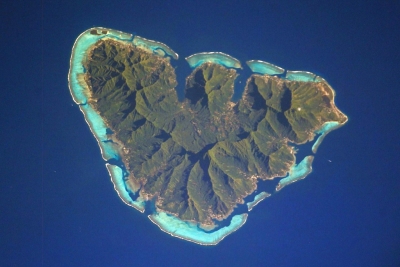
Oceanic islands, also known as volcanic islands, are formed by eruptions of volcanoes on the ocean floor. No matter what their height, oceanic islands are also known as “high islands.” Continental and coral islands, which may be hundreds of meters taller than high islands, are called “low islands.”
As volcanoes erupt, they build up layers of lava that may eventually break the water’s surface. When the tops of the volcanoes appear above the water, an island is formed. While the volcano is still beneath the ocean surface, it is called a seamount.
Oceanic islands can form from different types of volcanoes. One type forms in subduction zones, where one tectonic plate is shifting under another. The island nation of Japan sits at the site of four tectonic plates. Two of these plates, the Eurasian plate to the west and the North American plate to the north, are associated with continental shelves. The other two, the Philippine plate and the Pacific plate, are oceanic. The heavy oceanic plates (the Pacific and the Philippine) are subducting beneath the lighter Eurasian and North American plates. Japan’s islands are some of the most actively volcanic in the world.
Another type of volcano that can create an oceanic island forms when tectonic plates rift, or split apart from one another. In 1963, the island of Surtsey was born when a volcanic eruption spewed hot lava in the Atlantic Ocean near Iceland. The volcano was the result of the Eurasian tectonic plate splitting away from the North American plate. This tiny island is one of the world’s newest natural islands.
Another type of oceanic island forms as a continent shifts over a “hot spot.” A hot spot is a break in the Earth’s crust where material from the mantle bubbles or rushes up. The crust shifts, but the hot spot beneath stays relatively stable. Over millions of years, a single hot spot formed the islands of the U.S. state of Hawaii. Hawaii’s “Big Island” is still being formed by Mauna Loa and Kilauea, two volcanoes currently sitting over the hot spot. The newest Hawaiian island, Loihi, also sits over the hot spot, but is still a seamount about 914 meters (3,000 feet) beneath the Pacific.
Credit : National Geographic Society
Picture Credit : Google




